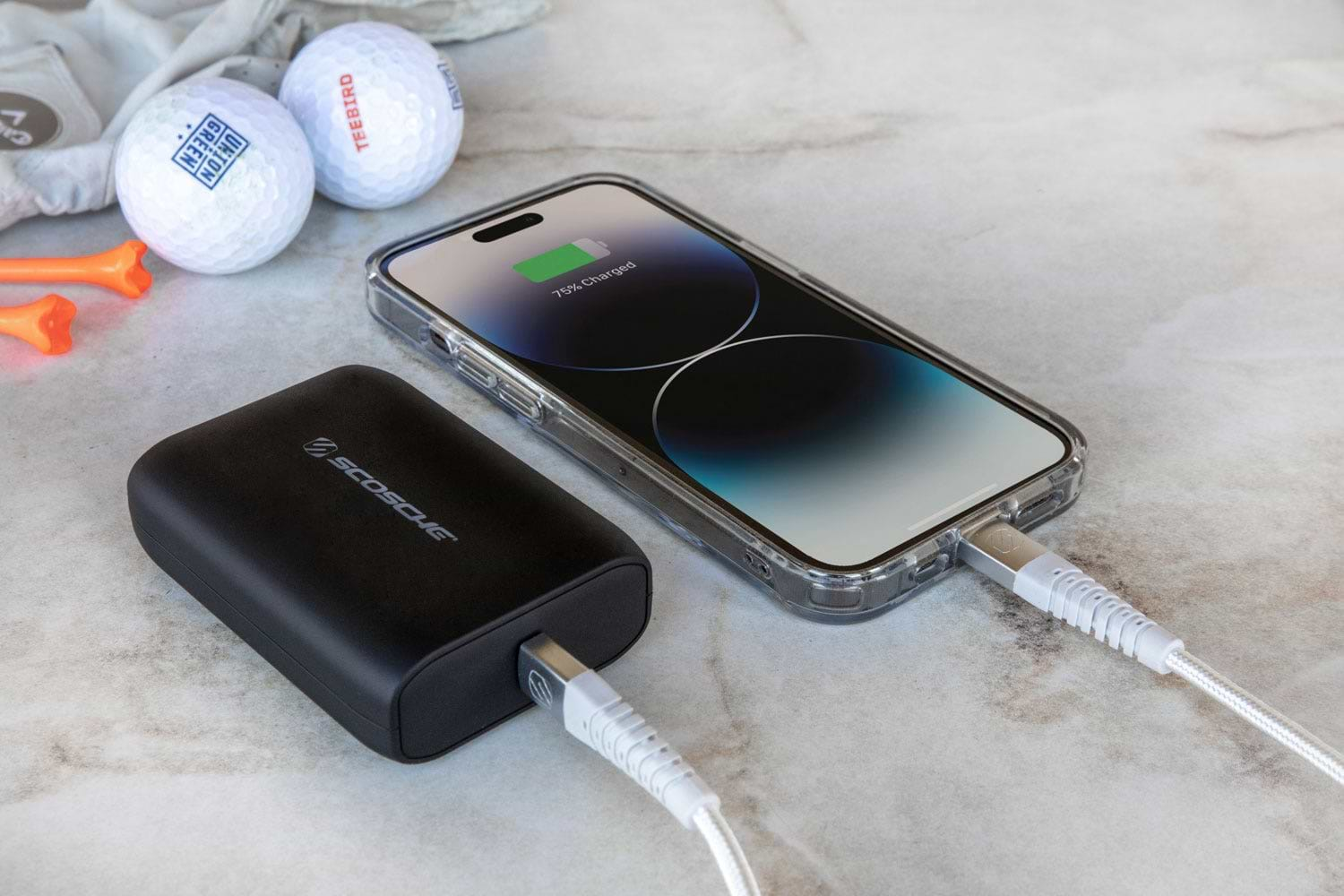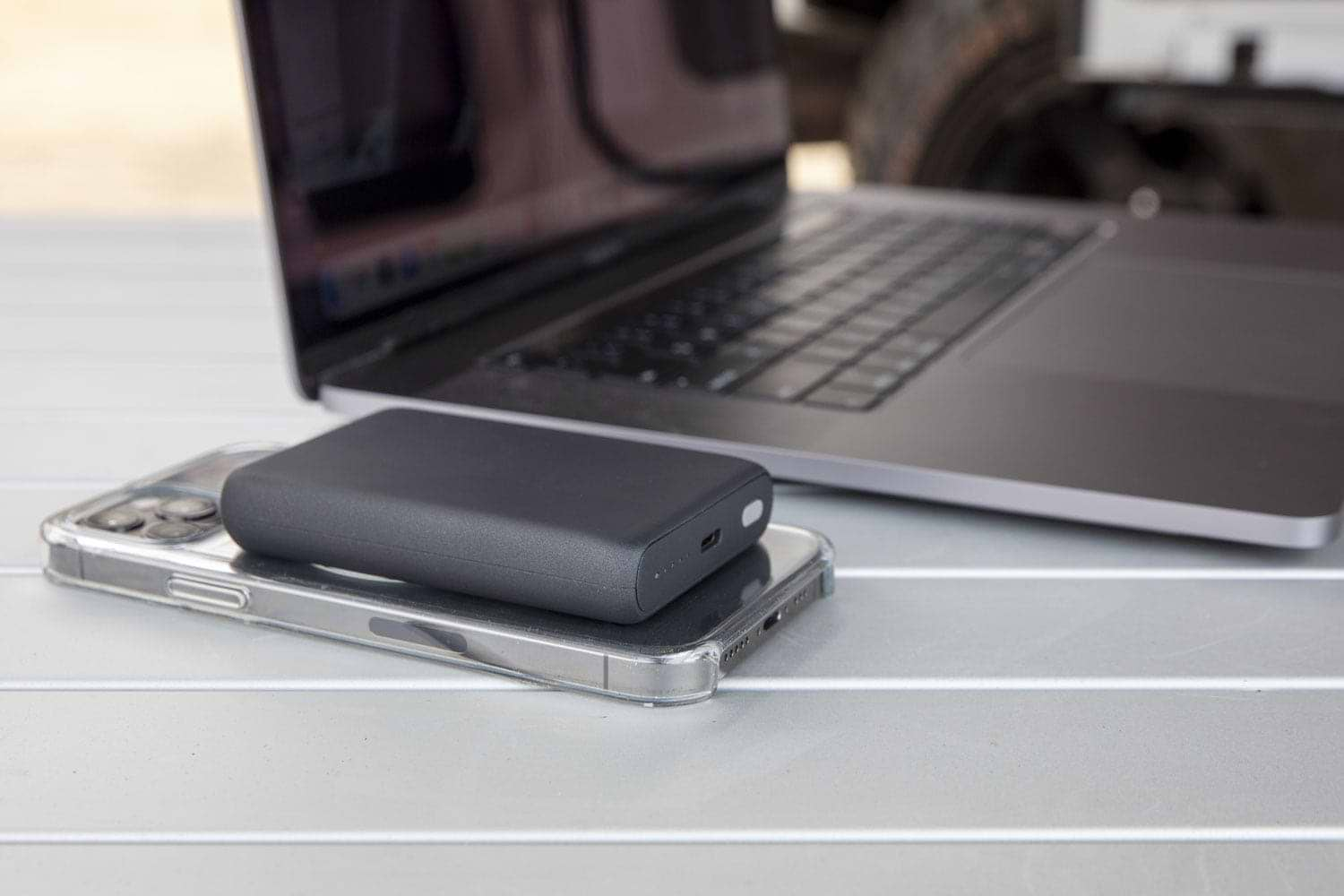Determining the Right Power Bank Size for Your Needs

In today's fast-paced world, staying connected is more important than ever. Whether it's for work or leisure, our devices have become an integral part of our daily lives. However, with the increasing reliance on smartphones, tablets, and other portable electronics, the need for a reliable power source has become paramount. Enter the power bank – a portable charger that allows you to charge your devices on the go. But, with so many options available, how do you determine the right power bank size for your needs?
In this article, we will dive deep into the world of power banks to help you make an informed decision.
Understanding Power Bank Basics
Before we delve into the different sizes and specifications of power banks, it's essential to understand what exactly a power bank is. In simple terms, a power bank is a portable battery pack that stores electrical energy and can be used to charge electronic devices. It acts as a backup power source when you can't access a wall outlet. Power banks come in various sizes, shapes, and capacities, each designed to cater to specific charging needs.
What Is a Power Bank?
A power bank comprises a lithium-ion battery, circuitry to regulate the power flow, and a set of ports to connect your devices. The battery capacity of a power bank is measured in milliampere-hours (mAh) and determines how much energy it can store. The higher the mAh rating, the more power the power bank can hold.
Different Types of Power Banks
Power banks are available in various types, such as slim, compact, rugged, and solar-powered. Slim power banks are lightweight and easily fit in your pocket or purse, making them ideal for everyday use. Compact power banks are slightly larger but offer higher capacity, making them suitable for longer trips or power-hungry devices. Rugged power banks are built to withstand harsh conditions and are perfect for outdoor adventures. Solar-powered power banks harness the energy of the sun and are great for eco-conscious individuals.
Now, let's take a closer look at the different types of power banks and their unique features. Slim power banks, as the name suggests, are designed to be sleek and lightweight. They are often no larger than a smartphone and can easily fit in your pocket or purse. Despite their small size, they still pack a punch when it comes to charging capacity. With a slim power bank, you can conveniently charge your devices on the go without any hassle.
Compact power banks, on the other hand, offer a higher capacity compared to their slim counterparts. They are slightly larger but provide more power, making them perfect for longer trips or when you have power-hungry devices that need frequent charging. With a compact power bank, you can ensure that your devices stay powered up even during extended periods away from a wall outlet.
If you're someone who loves outdoor adventures and needs a power bank that can withstand harsh conditions, then a rugged power bank is the way to go. These power banks are built to be durable and resistant to water, dust, and shock. Whether you're hiking in the mountains or camping by the beach, a rugged power bank will be your reliable companion, ensuring that your devices stay charged no matter the environment.
For those who are environmentally conscious, solar-powered power banks are an excellent choice. These power banks utilize solar panels to convert sunlight into electrical energy, which can then be used to charge your devices. By harnessing the power of the sun, you can reduce your carbon footprint and rely on renewable energy to keep your devices powered up.
Importance of Choosing the Right Power Bank Size
Choosing the right power bank size is crucial to ensure efficient device charging and to meet your specific needs. The right size can significantly impact both the charging experience and the portability and convenience of the power bank.
Impact on Device Charging
The size of the power bank determines how many times you can charge your device before needing to recharge the power bank itself. If you have a small power bank, it may not have enough capacity to fully charge your device multiple times. On the other hand, a larger power bank can provide multiple charges and keep your devices running for an extended period.
Let's say you're going on a camping trip for a few days. You'll be away from any power outlets, and you want to make sure your smartphone stays charged for the duration of your adventure. In this case, a power bank with a larger capacity, such as 20,000mAh, would be ideal. With this size, you can charge your smartphone multiple times, ensuring you stay connected with the outside world even in the wilderness.
Influence on Portability and Convenience
While a large-capacity power bank may offer more charges, it can also be bulkier and heavier, making it less convenient to carry around. In contrast, a smaller power bank may be more lightweight and compact, fitting easily into your bag or pocket. Depending on your usage and mobility needs, you'll need to strike a balance between capacity and portability.
Imagine you're a frequent traveler, always on the go. You need a power bank that can easily fit into your carry-on luggage or even your pocket. In this scenario, a smaller power bank with a capacity of around 5,000mAh would be perfect. It provides enough power to charge your smartphone once or twice, ensuring you have enough juice to stay connected during your travels without weighing you down.
Additionally, some power banks come with built-in cables, eliminating the need to carry extra charging cables with you. This feature adds to the convenience and portability of the power bank, allowing you to charge your devices on the go without any hassle.
Factors to Consider When Choosing a Power Bank Size
Now that we understand the importance of choosing the right power bank size, let's explore the key factors to consider when making your decision.
Your Device's Battery Capacity
The first factor to consider is your device's battery capacity. Different devices have different battery sizes, and you'll need to ensure that the power bank you choose can fully charge your device. If your device has a smaller battery, a power bank with a lower capacity may suffice. However, if you have a power-hungry device with a large battery, opt for a power bank with a higher capacity to ensure multiple charges.
Your Usage Habits
Understanding your usage habits is crucial in determining the right power bank size. If you use your device heavily throughout the day, a power bank with a higher capacity will provide you with the peace of mind of never running out of power. Conversely, if you only need occasional top-ups, a smaller power bank may be sufficient.
Travel and Mobility Needs
If you're a frequent traveler or always on the go, portability becomes a critical factor. A smaller, more lightweight power bank will be easier to carry around and won't weigh you down. Additionally, consider the availability of wall outlets during your travels. If you anticipate being in remote or off-grid locations, a power bank with a larger capacity will ensure you have enough power to last until your next charging opportunity.
Another aspect to consider when it comes to travel and mobility needs is the charging speed of the power bank. Some power banks come with fast charging capabilities, which can significantly reduce the time it takes to charge your device. This can be especially useful when you're on a tight schedule or in situations where you need to quickly power up your device.
Furthermore, if you're an outdoor enthusiast who loves to engage in activities like camping or hiking, you might want to consider a power bank with rugged features. These power banks are designed to withstand harsh environments and are often dustproof, shockproof, and waterproof. So, whether you're exploring the wilderness or simply caught in a sudden rainstorm, you can have peace of mind knowing that your power bank is well-protected.
Decoding Power Bank Specifications
When it comes to choosing a power bank, the world of specifications can be a bit overwhelming. But fear not! We're here to shed some light on two essential specifications that will help you make an informed decision.
Understanding mAh
Let's start with the milliampere-hour (mAh) rating, which indicates the capacity of a power bank. Think of it as the fuel tank of your power bank. The higher the mAh rating, the more power it can hold, and the more charges it can provide. So, if you're constantly on the go or have multiple devices to charge, opting for a power bank with a higher mAh rating might be a wise choice.
However, it's important to note that the actual charging capacity may be slightly lower than the stated mAh rating. Why? Well, during the charging process, there are energy losses that occur.
These losses can be attributed to factors like heat dissipation, voltage conversions, and internal circuitry. So, while the mAh rating gives you a good idea of the power bank's capacity, it's always good to keep in mind that the actual charging capacity might be slightly lower.
Considering Output Current
Now, let's move on to the output current, which determines how fast your power bank can charge your device. Think of it as the speed at which your power bank can refuel your devices. The unit of measurement for output current is amperes (A). Most power banks come with multiple output ports, each with its output current rating.
When choosing a power bank, it's crucial to check the output current rating to ensure compatibility with your device and desired charging speed. If you have a device that supports fast charging, you'll want to make sure that the power bank's output current can deliver the required amperage. On the other hand, if you have a device that doesn't support fast charging, you can opt for a power bank with a lower output current rating, which might save you some bucks.
Remember, the output current rating is not a one-size-fits-all solution. It's important to consider your device's charging capabilities and your charging needs to make the right choice.


Avoiding Common Mistakes When Choosing a Power Bank
As you navigate through the world of power banks, it's essential to be aware of some common mistakes that people often make. By avoiding these mistakes, you can ensure a satisfying charging experience.
Overlooking Compatibility Issues
One of the most common mistakes is overlooking compatibility issues. Not all power banks are compatible with every device, so it's essential to check the compatibility before making a purchase. Ensure that the power bank has the appropriate charging port and voltage capability to charge your specific device.
Ignoring Quality for Price
Price can be a significant factor when choosing a power bank, but it's essential not to compromise on quality. Low-quality power banks may not provide the stated capacity or output current, posing a risk to your devices. Invest in a reputable brand with positive customer reviews to ensure you're getting a high-quality power bank that will last.
Conclusion
In conclusion, determining the right power bank size for your needs requires careful consideration of factors such as device battery capacity, usage habits, and travel requirements. By understanding power bank basics, decoding specifications, and avoiding common mistakes, you can select a power bank that perfectly aligns with your charging needs. So go ahead and power up your devices with confidence, knowing that you have the right power bank by your side.